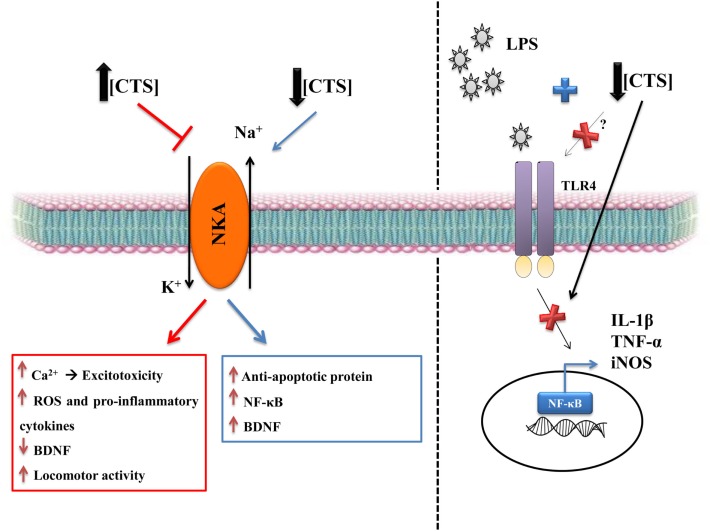Figure 2.
The dual role of CTS. CTS at high concentrations are deleterious, due to NKA inhibition that consequently increases intracellular Na+, which leads to raised intracellular Ca2+ that can be the first signal of neuronal excitotoxicity (91). There is also an increase in reactive oxygen species and in pro-inflammatory cytokines and a decrease in BDNF, which is a relevant growth factor in the brain (108, 109, 114). CTS also increase locomotor activity (114), particularly when the CTS are intracerebroventricular injected, as in the ouabain model of mania (110). CTS seem to be involved in mood disorders, such as depression and bipolar disorder. Low concentrations of CTS can have a protective role, including the CNS. CTS can activate anti-apoptotic protein, such as Bcl-xL, as well as increasing NF-κB and BDNF (88–90, 100). Our group showed that the pretreatment with ouabain can be protective against neuroinflammation caused by LPS (90). This protection is due to decreased IL-1β, TNF-α, and iNOS mRNA levels and in the rescue of BDNF levels, thereby reverting the changes induced by LPS and, consequently, decreasing astrocytic activity, as measured by dentate gyrus GFAP (90).

